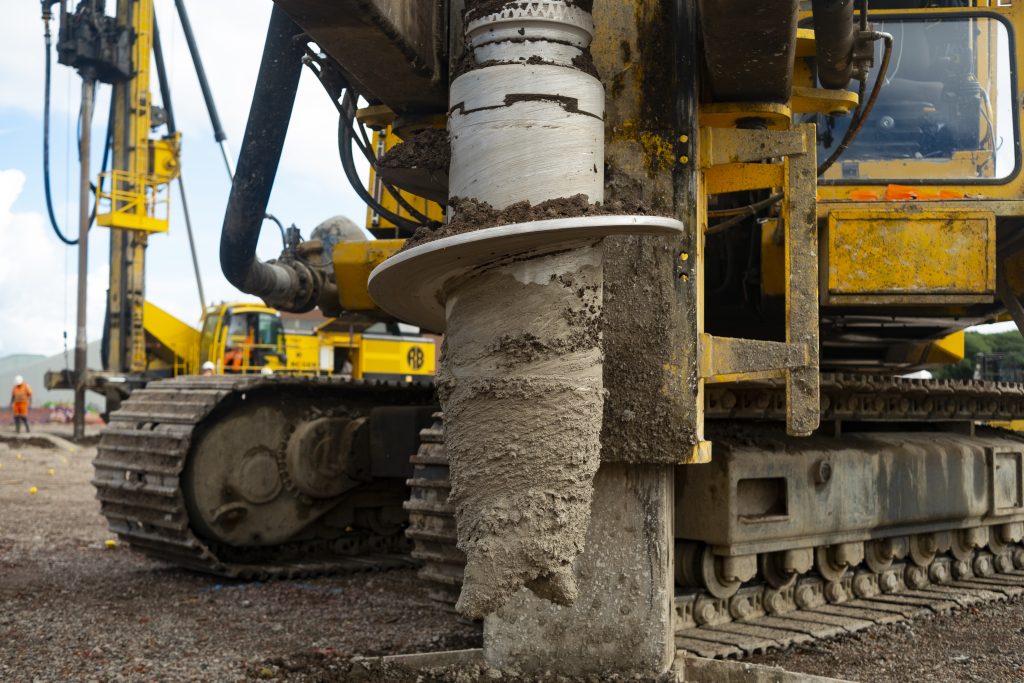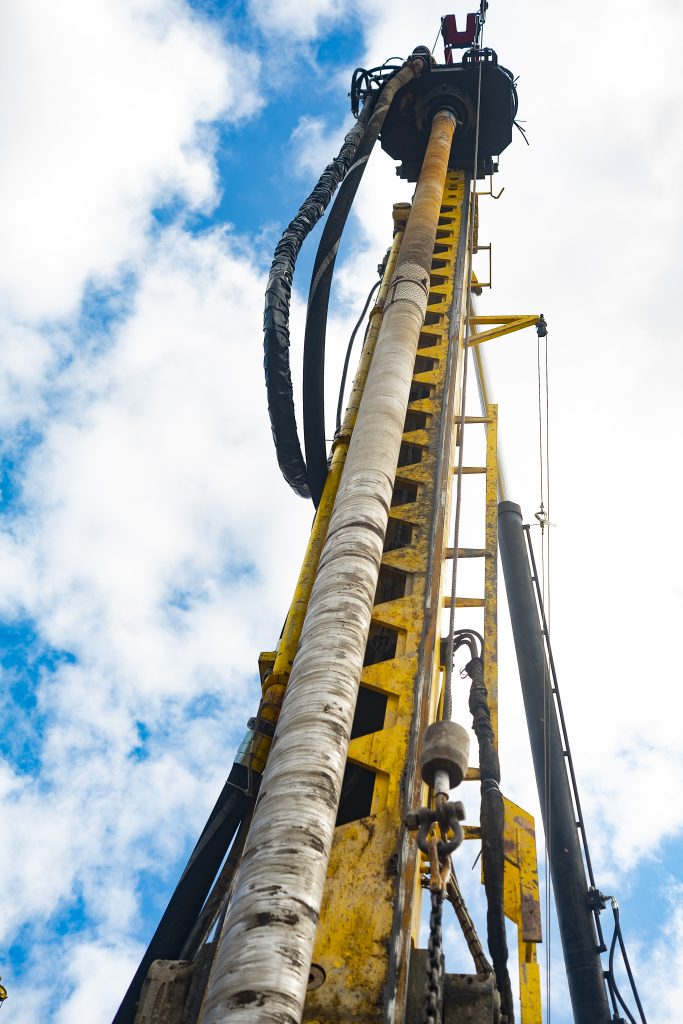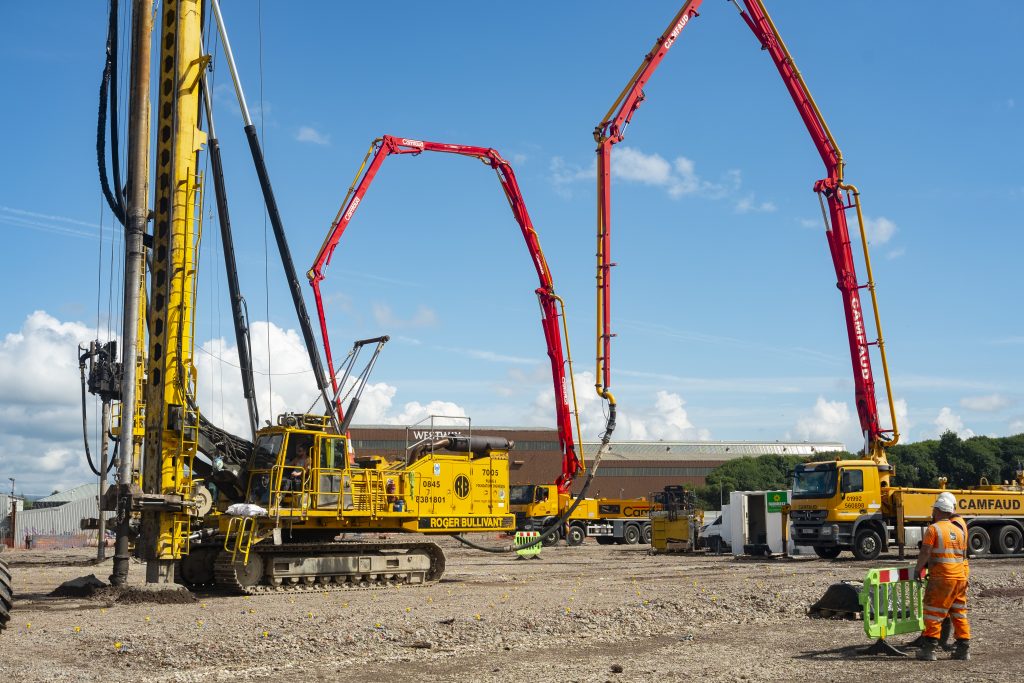CLIENT
JJL Design & Build Limited
SCOPE OF WORKS
PROJECT BRIEF
The RB Scotland team was approached by JJL to provide a foundation solution for a cold and ambient storage warehouse located on the South side of Wright Street in Renfrew. The warehouse is owned by BFS Group Limited, a subsidiary of the multinational Bid Corporation Ltd.
Upon reviewing the engineers’ foundation proposal, RB found that it involved using a piled solution beneath the frame and a Vibro Stone Column solution beneath the internal floor slab area. However, after a preliminary review, RB concluded that the soil conditions and loading requirements made this solution unfeasible. Drawing on their local knowledge and experience of the area, the RB team proposed a cost-effective alternative solution that involved a combination of Continuous Helical Displacement (CHD) piles for the frame and Helical Displacement Inclusion (HDI) ground improvement for the ground floor slab area.
KEY ISSUES
- The design of the structure required the foundation to support a 450kN pile load and withstand lateral forces between 50kN to 75kN beneath the frame pad foundations. The internal ground-bearing floor slab had to bear a capacity of 68kN/m2 (Cold Store) and 65kN/m2 (Ambient), with an additional 9kN/m2 beneath the office area, whilst maintaining a total settlement within 30mm.
- The ground conditions on site mainly consisted of made ground on top of soft to firm sandy gravelly silt/clay, overlying silty gravelly loose to medium dense sand, which extended to around 30.00mbgl where stiff clays (glacial deposits) were encountered.
- During the initial design review, RB noticed that a site regrade was planned before their work commenced. However, due to the existing levels, the client could not permit a load transfer platform (LTP) with a thickness greater than 150mm without a costly redesign of the underbuild or civils. This was further complicated by the working platform required for the RB rig during installation.
- In addition, the difference in insulation and slab thickness between the ambient and cold storages created a circa. 200mm difference to the formation level of the slab, which impacted the level and thickness of the load transfer platform.
- The site is located on the flight path for Glasgow International Airport (GIA) which posed logistical challenges for project delivery, including adapting the RB rigs to meet requirements.
- As with most industrial redevelopment projects, historical structures were anticipated, and site investigations revealed that structures extended to 4.00mbgl (basement). During initial exploratory works by JJL, several piles were discovered that were not related to the known historic foundations.
SOLUTION
- Before RB began their work, JJL conducted an exploratory exercise to locate and remove known historic foundations, including a basement section, down to 4.00mbgl. However, RB encountered additional obstructions during the project, both natural and man-made. To address this, RB had a design addendum prepared to enable the repositioning of HDIs or variation in their length on an alternative spacing.
- To address space limitations for the LTP, RB proposed incorporating the working platform into the overall LTP thickness required, which reduced the additional import of fill and adhered to JJL’s level restrictions. To accomplish this, HDI heads were excavated immediately following installation, and geotextiles were introduced to allow the alternating levels and loads between the various sections.
- RB proceeded to install 197No. 300/600mm diameter and 60No. 400/700mm diameter CHD piles beneath a steel portal frame with lengths ranging between 10.00 – 16.00m, and 2493No. 300mm HDIs to a length of 8.00m with an additional 111No. HDIs to a length of 4.00m beneath the ground-bearing floor slab. The HDIs were validated through plate load tests and a zone test to ensure that the recorded settlements were in line with the design calculations and addendums.
- The benefits of the CHD technique beneath the pad foundations permitted higher capacity per pile, minimising both the cost and duration of the installation. In addition, this aided in follow-on works with standard cropping procedures to be permitted whilst RB was still on site. The frame foundations were situated >1.20m below the base of the slab, thus cropping detail on an HDI solution would be impractical. The HDI technique allowed for a thinner, conventional ground-bearing slab, vibration-free installation, and minimal spoil removal, with no trimming of the inclusions post-installation. This also permitted the sequential release of areas to allow follow-on works.





